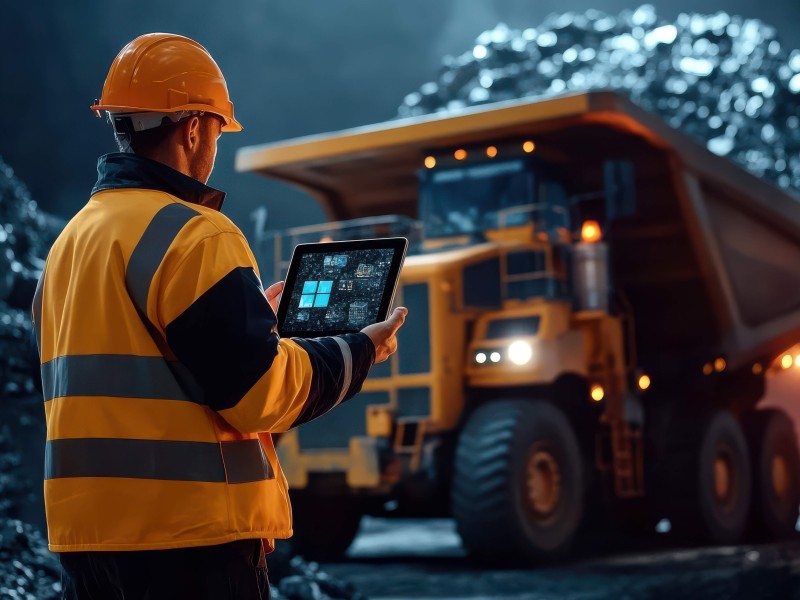Blog
The Rise of Autonomous Mining: Revolutionising the Industry

What Is Autonomous Mining?
At its core, autonomous mining goes beyond simply mechanising tasks. It harnesses the power of machine learning algorithms and sophisticated AI systems to optimise every aspect of mining operations. These intelligent systems continuously collect and analyse data, enabling them to pinpoint the most cost-effective and efficient methods for various tasks. This data-driven approach not only enhances productivity but also identifies potential areas for optimisation that were previously overlooked.
Transforming Haulage Operations
One of the most visible applications of autonomous technology is in haulage. Companies around the globe are increasingly adopting autonomous haul trucks, which have shown a significant boost in productivity. Reports suggest that these trucks can operate up to 700 additional hours annually compared to conventional models, radically altering material output within the sector. This dramatic increase in operational hours not only enhances efficiency but also reduces costs, making mining operations more competitive.
Beyond Trucks: A Holistic Approach to Mining Safety
However, the benefits of autonomy extend far beyond haul trucks. AI-powered systems equipped with advanced sensors are now monitoring mine site security, identifying potential hazards, and managing site traffic through cameras and automated controls. Given the inherent dangers of heavy machinery in mining, effective monitoring is crucial for ensuring safety. Additionally, autonomous drones are streamlining exploration and surveying processes, providing real-time data analysis via cloud-based streaming. While autonomous plant designs are still emerging, their growing popularity signals a shift towards more automated and efficient mining operations.
The Dangers of Poor Mine Maintenance
Historically, the mining industry has relied heavily on preventative maintenance models. These traditional approaches often intervene only after problems arise or adhere to set schedules based on usage patterns, resulting in significant inefficiencies. A 2022 Deloitte report highlights that poor maintenance can reduce a plant's productivity by 5% to 20%, costing the industrial sector an estimated $50 billion annually.
AI: The Game-Changer for Predictive Maintenance
The emergence of AI presents a powerful solution to these maintenance challenges. With the AI industry projected to reach $908.7 billion by 2030, its potential for enhancing predictive maintenance capabilities is immense. AI-powered systems enable continuous monitoring and real-time analysis of data from multiple sensors, identifying potential issues before they escalate and significantly reducing downtime.
Leveraging Data: The Future of Mining Operations
Despite the mining sector's growing reliance on technology, there remains a significant challenge: the underutilisation of collected data. Forrester estimates that 60–73% of organisational data goes unused for strategic purposes. However, advancements in AI and machine learning allow for the analysis of vast datasets, predicting equipment failures weeks or even months in advance. This capability is transforming maintenance strategies and asset management.
Real-World Success Stories
Several industry leaders are already reaping the benefits of AI-driven predictive maintenance:
- Votorantim Cimentos: Brazil's largest cement manufacturer saved $5.5 million in corrective maintenance costs by implementing predictive analytics across its mining sites.
- Rio Tinto: By utilising predictive maintenance to monitor assets in North America, Rio Tinto has significantly enhanced its operational efficiency.
- Overland Rock Conveyors: Continuous real-time monitoring of these vital systems has enabled companies to predict failures, optimising maintenance schedules and increasing productivity.
Embracing AI: Overcoming Implementation Challenges
Despite its advantages, implementing AI in mining is not without challenges. High initial costs, data quality concerns, and cultural resistance pose significant hurdles to widespread adoption. Mining companies must invest in the right infrastructure and workforce to leverage AI's full potential effectively.

Sustainability: A New Priority
As sustainability becomes increasingly important in mining, AI can play a pivotal role. AI-driven systems can monitor environmental conditions, optimising resource allocation and minimising ecological impact. As consumer demand for responsibly sourced products grows, mining companies that fail to adapt risk alienating stakeholders.
Looking Ahead: The Future of Autonomous Mining
The integration of AI and autonomous solutions is set to redefine mining operations. As these technologies advance, they promise to optimise processes and improve efficiency across the board. By utilising AI for predictive maintenance and embracing automation, the mining sector can enhance safety, reduce costs, and ultimately secure a more sustainable future.
Join the Conversation
The future of autonomous mining is bright, but it's just the beginning. As the industry evolves, questions arise about how these technologies will shape job roles, skill requirements, and overall dynamics within the sector. Are you ready to dive deeper into the world of autonomous mining? We invite you to share your thoughts on this transformative shift in mining. Please complete our contact form, and let's start the conversation!
This article was written by Natasha Derrick

